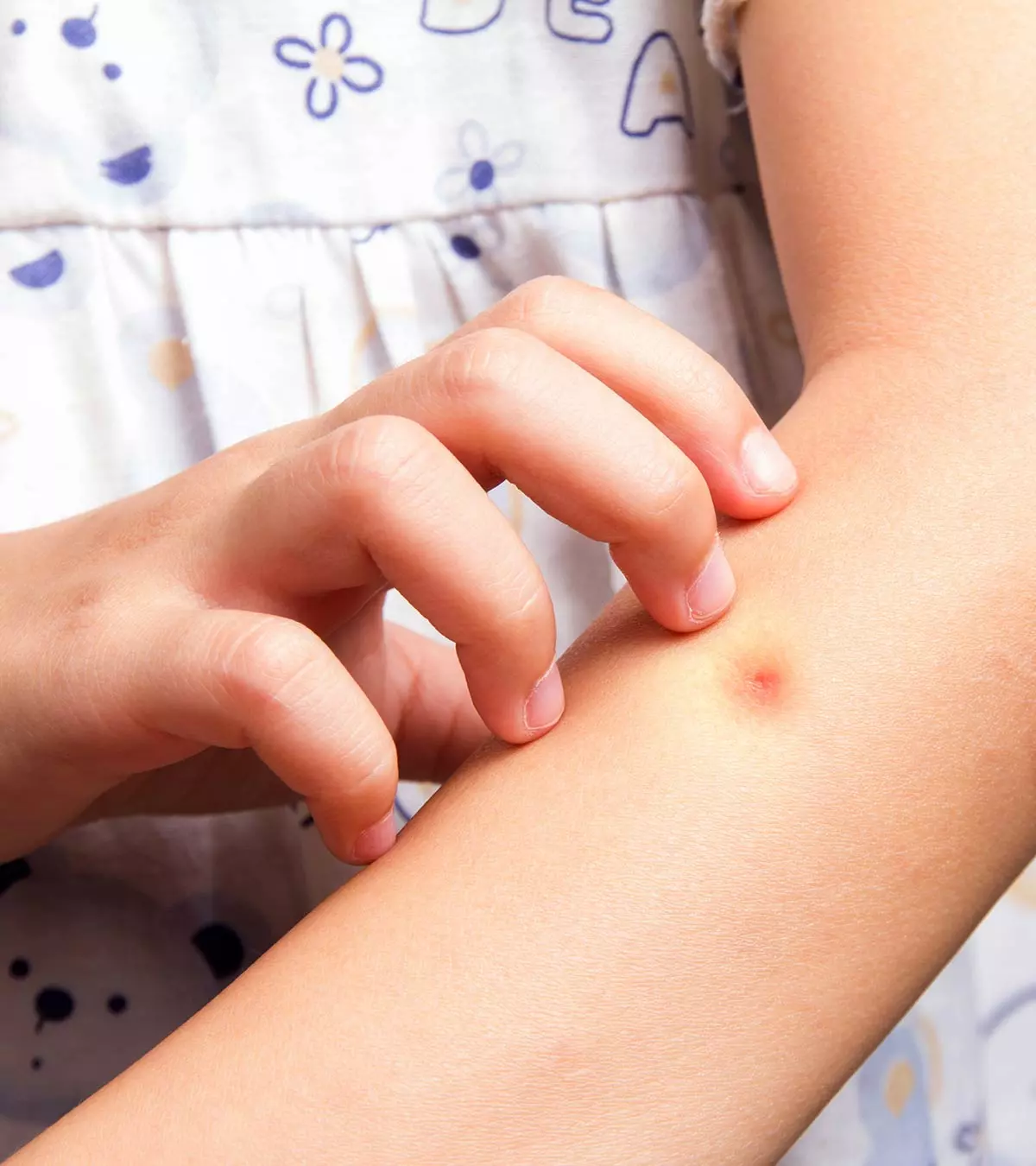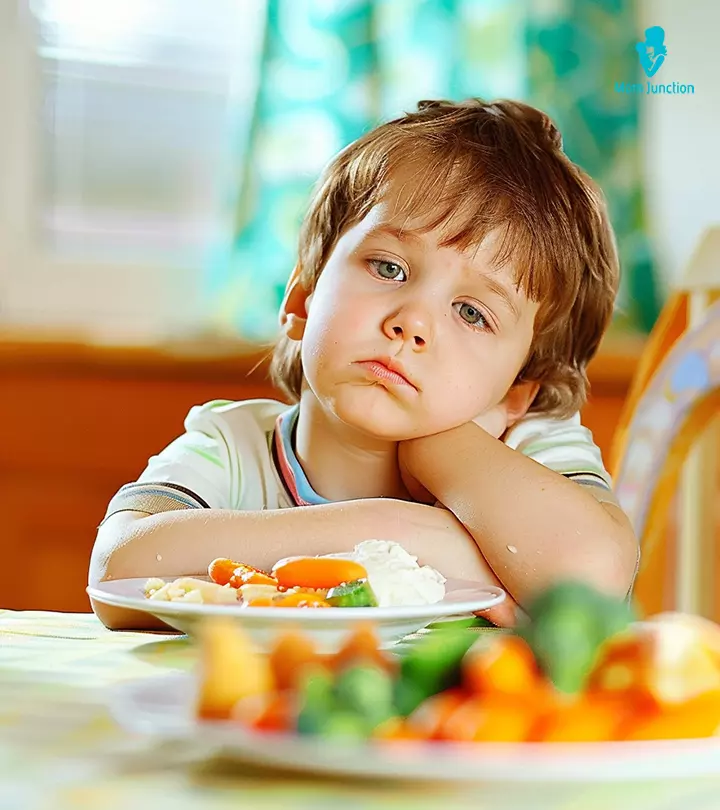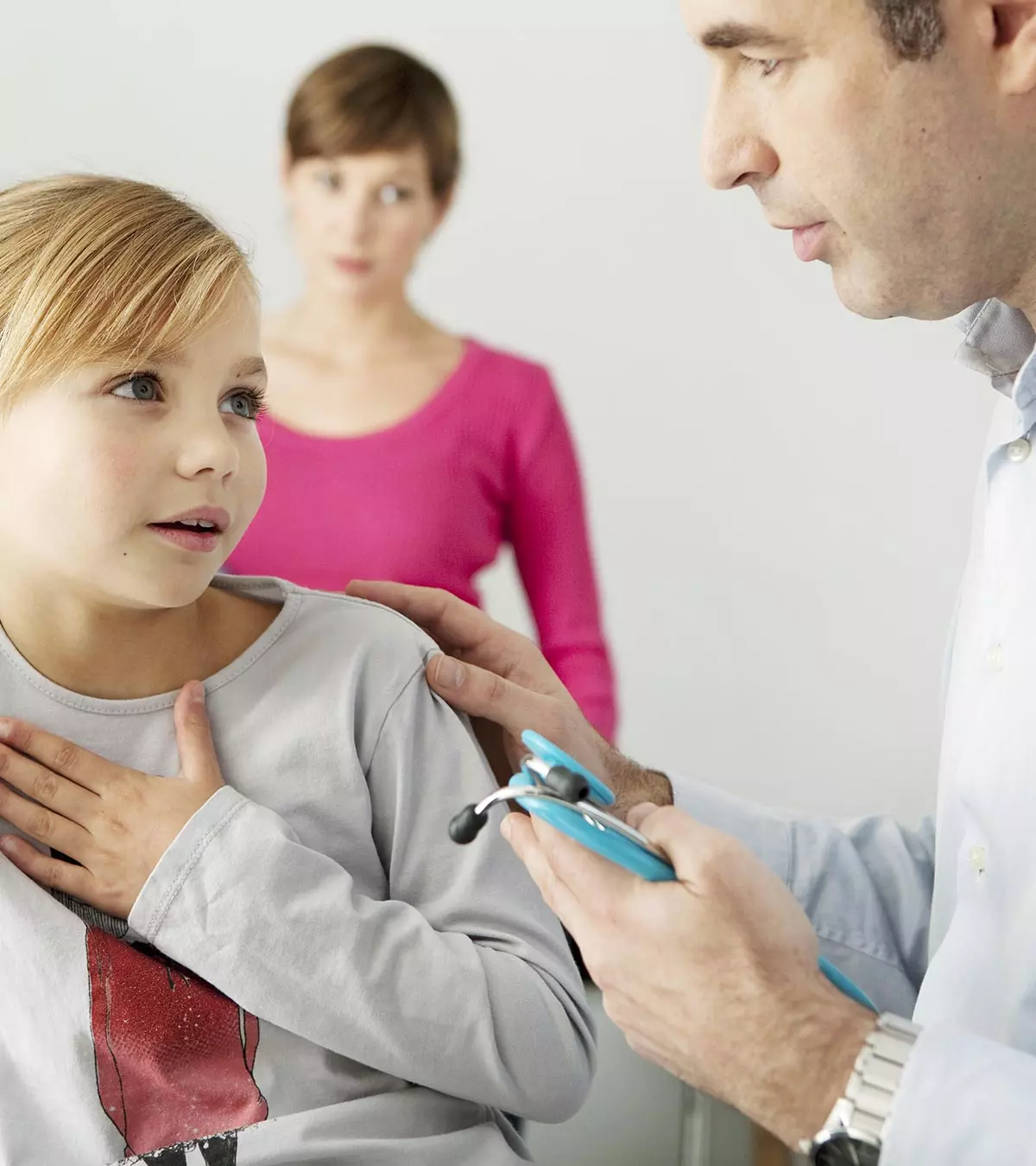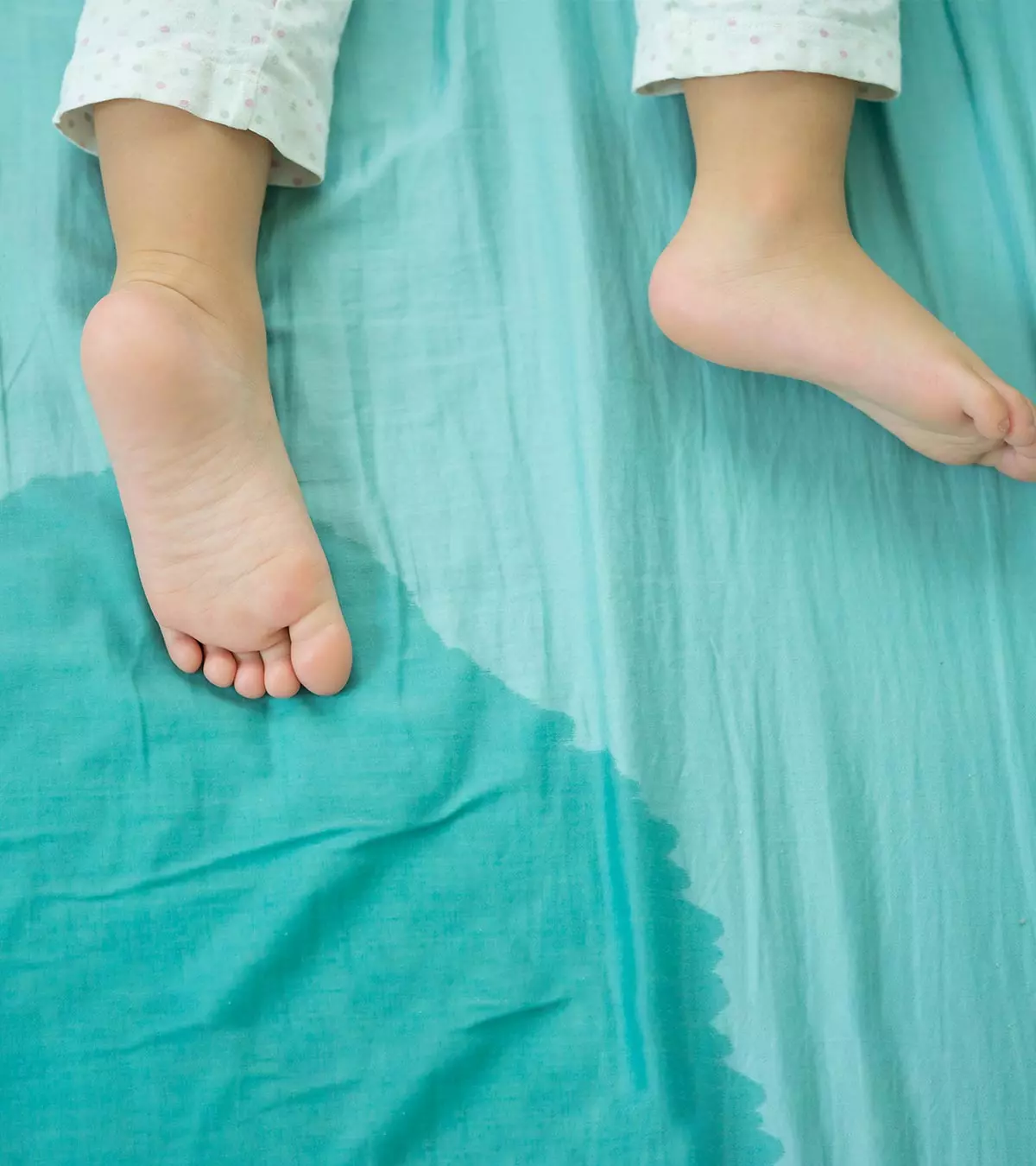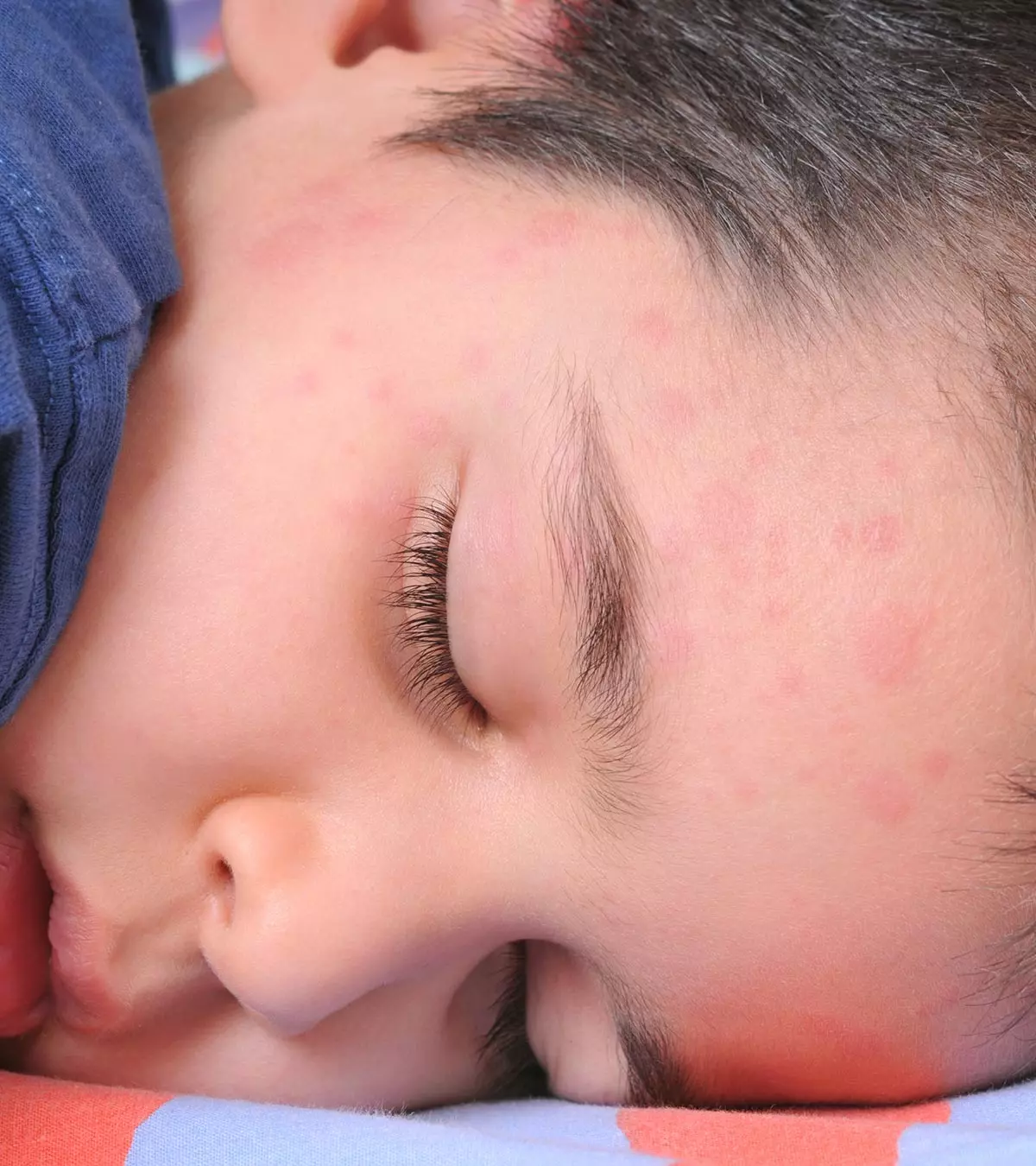
Image: Shutterstock
Tapeworm in children may not cause signs and symptoms for a long time after entering the body. This is also known as taeniasis and is found in humans all around the globe. However, children living in Latin America, Asia, Sub-Saharan Africa, and Eastern Europe have a higher incidence (1). Abdominal pain and weight loss are seen in some children. These worms can form cystsiA fluid, air, or pus-filled sac-like pocket anywhere on the body. anywhere in the body and are called cysticercosis, and in the brain, it is called neurocysticercosis. Brain infection with tapeworm larvae can cause epilepsyiA neurological condition that makes one more susceptible to recurrent seizures. . This accounts for 30% of seizure cases in endemic zones (2). Read on to know the types, signs, causes, treatment, and prevention of taeniasis or tapeworm infection in children.
Key Pointers
- Taeniasis, or tapeworm infection, can have a prolonged incubation period before symptoms manifest in a child.
- Symptoms of taeniasis in children can include weight loss, stomach pain, and discomfort.
- Children can become infected with tapeworms through various means, including undercooked meat, contaminated food, water, and surfaces.
- A few tapeworm species that may infect people include Taenia solium, Taenia saginata, Taenia asiatica, and Hymenolepis nana.
- Potential side effects of tapeworm infection can include cysticercosis, pancreatitis, cholecystitis, intestinal obstruction, anemia, and anaphylaxis.
- Preventive measures for tapeworm infection in children include practicing good hand hygiene, consuming well-cooked homemade meals, and drinking clean water.
What Is A Tapeworm And How Does It Grow?

Tapeworms are parasitic intestinal worms. They are flatworms that look like a long tape, and they live in the intestines of humans or animals. They are not capable of surviving outside the host.
Tapeworms can live for several years and grow more than 30 meters long. They grow by feeding on the nutrition from the hosts, thus causing nutritional deficiencies.
Kids can get tapeworm infection from food or water contaminated with a worm or its eggs. The parasite attaches itself to the lining of the intestine and feeds on blood that contains digested nutrients.
Tapeworms are made up of numerous segments, and each segment can produce eggs. The tapeworm undergoes significant growth as it develops, then the lower segments break off and appear in feces.
The eggs and tapeworm segments from the feces of infected people can contaminate food and water. They may persist in soil or water for months, and their transmission to humans or animals poses a significant public health risk (3).
Types Of Tapeworms
The species of tapeworms that cause infection in humans are (4):
- Taenia solium (pork tapeworm)
- Taenia saginata (beef tapeworm)
- Taenia asiatica (Asian tapeworm)
- Hymenolepis nana (dwarf tapeworm)
- Diphyllobothrium latum (fish tapeworm)
- Echinococcus
How Do Tapeworms Infect Kids?
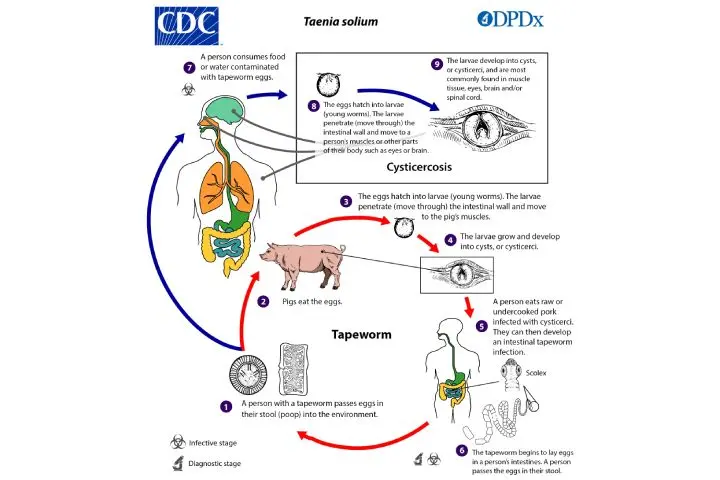
Source: Human Tapeworm; US Centers for Disease Control and Prevention
Kids become infected with tapeworm from the following:
- Consuming food or water contaminated with infected feces
- From an infected person, if they have not washed hands after using the toilet
- From contaminated objects for example, doorknobs
- Eating undercooked or uncooked fish or meat from an infected animal (5)
- Eating without washing their hands after playing in contaminated soil or water
The child can acquire tapeworms in the following ways:
- When a child ingests the eggs of the adult tapeworm due to contaminated food and water from the feces, cysticerci (the larval stage of the tapeworm) develops in the human tissues.
- When the child ingests the cysticerci itself from uncooked or poorly cooked meat or fish, the cysticerci grow and become adult tapeworms, infesting the gastrointestinal system.

 Quick fact
Quick factSigns And Symptoms Of Tapeworms In Children
Most kids with tapeworms can be asymptomatic for months or years. However, some may develop signs and symptoms of tapeworm infection such as (6):
- Abdominal pain
- Diarrhea
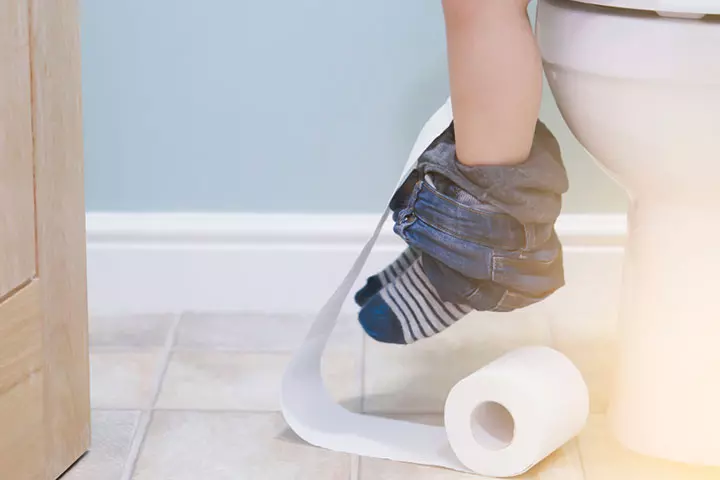
- Nausea
- Loss of appetite
- Weight loss
- Worms in feces or around the anus
- Anemia Cysts in the skin or internal organs
These symptoms mostly occur if the child has intestinal tapeworm; however, cystic larval infections are usually asymptomatic and cause complications to other organs after years (24).
Complications Associated With Tapeworms In Children
If delayed treatment or left untreated, tapeworms, specifically cystic larval infections, can cause severe complications in children. They may include (7) (24):
- Cysticercosis: Eggs of Tenia solium (pork tapeworm) can reach the bloodstream from the intestines. These can move to other parts of the body and form cysts in muscles, brain, eyes, or other organs. Cysticercosis is prevalent in places with poor sanitation and hygiene practices.
Cysts may cause symptoms depending on its location, including (7):
- Muscles: Lumps under the skin
- Heart: Abnormal heartbeat
- Brain: Seizures, confusion, vision problems, headaches, meningitisiInflammation of the protective membranes and fluid that surround the brain and spinal cord. , hydrocephalusiA neurological disorder characterized by an abnormal accumulation of excessive cerebrospinal fluid in the brain cavities. , stroke
- Spine: Weakness and difficulty in walking
- Cysts may cause anaphylaxis (allergic reaction) if they are broken or damaged.
Other possible complications of tapeworm infections are (8):
- Pancreatitis (inflammation of the pancreas)
- Cholecystitis (inflammation of the gall bladder)
- Bowel obstruction
- Meckel's diverticulitisiInflammation of the small pouch (Meckel's diverticulum) in the small intestine.
- Vitamin-deficiency anemia or pernicious anemiaiA rare autoimmune disorder that stops the body from absorbing vitamin B12, this, leading to vitamin B12 deficiency.
Some other complications caused by specific tapeworms include:
- Brain infection caused by pork tapeworm eggs is known as neurocysticercosis. This can be fatal if left untreated.
- Echinococcus tapeworm causes hydatid disease (echinococcosis), which most commonly affects the liver. A large hydatid cyst can damage the liver and cause other problems.
Note: You do not get cysticercosis from eating pork since the eggs are not found in meat. It generally happens after consuming food or water contaminated with feces that contain the tapeworm eggs.
When To See The Doctor
Although tapeworm infections usually do not cause any problems, you may need to see a doctor if your child shows signs and symptoms that are concerning. Also, if your child or the family has a recent history of traveling to foreign countries or eating an undercooked meal, let your child’s doctor know (24).
Diagnosis Of Tapeworms In Children
The following are used to diagnose tapeworm infection (9):
- Stool sample analysis to check for eggs and worm segments
- CT or MRI scan for cysts
- Blood tests to identify antibodies
- Ultrasound of the liver
The doctor may also ask for samples after the treatment to ensure that the stool is free of eggs and segments. Follow-up tests are vital to confirm the infection has been completely cleared and monitor any potential recurrence.
Treatment For Intestinal Tapeworm In Children
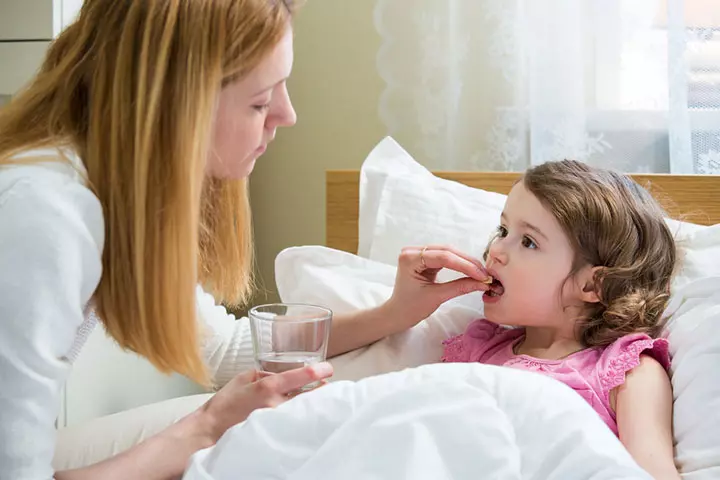
Helminth infection is treated with antihelminthic agents that kill or paralyze the worms. Some of the effective drugs include (10):
- Biltricide (Praziquantel)
- Albenza (Albendazole)
- Alinia (Nitazoxanide)
- Mebendazole
These drugs are effective against adult worms but not the eggs. To prevent reinfection it is important that your child washes their hands thoroughly before eating and after using the toilet. Over-the-counter treatments may not be effective and a prescription medication may be required.
Infections that occur in other organs, outside the intestine, may need other treatments in addition to antihelminthic therapy. The doctor may administer the following medications depending on the site and complications of the infections (11) (12):
- Albendazole (Albenza) (antihelminthic medication) helps reduce the size of cysts. Ultrasound or radiographic imaging is done to evaluate the effectiveness of treatment.
- Niclosamide blocks glucose intake and could damage the metabolism in the tapeworm.
- Prescription corticosteroid medications such as prednisone and dexamethasone may help to decrease inflammation of the tissue.
- Anti-epileptic medications are given if neurocysticercosis causes seizures.
- Hydrocephalus (excess fluid in the brain) caused by tapeworms may require shunting of fluid from the head using tubes to avoid complications.
- Surgical removal of the cysts may be done to remove cysts from the organs, the cavity is washed with anti-parasitic solutions to prevent reinfection.
According to the World Health Organization, in endemic countries, anthelminthic medicines were administered to more than 500 million children in 2021, accounting for approximately 62% of all children susceptible to infections (25). It is important to follow the recommended treatment regime to avoid complications of the disease. Untreated infections may impede normal development and increase the risk of developing complications.
 Quick fact
Quick factAdditionally, research shows that some natural or home remedies might help combat intestinal worms.
- In one study, garlic was found to have compounds or active ingredients with cestocidal (ability to destroy cestodes or tapeworms) properties. These compounds were shown to reduce movement, cause death, and harm the body segments of worms in a controlled environment (13).
- A combination of air-dried papaya seeds and honey also exhibited anti-parasitic properties in children (14).
- Other possible remedies include ginger, neem, turmeric, clove, and pumpkin.
Always consult a healthcare professional before trying these remedies.
How To Prevent Tapeworms In Children?
The following tips will help to prevent tapeworms in kids (15):
- Wash hands with soap and water before eating and after using the toilet

The following tips can be helpful if you are traveling to endemic areas:
- Drink boiled or bottled water.
- Avoid water fountains and ice cubes.
- Do not consume fruits and vegetables peeled by others.
Frequently Asked Questions
1. Can worms affect a child’s behavior?
Infected children may be less active and appear dull or slow, physically and emotionally. Contact your doctor if you notice these symptoms and get your child tested (16).
2. Can my child go to school with worms?
Yes, children with tapeworms can go to school, nurseries, or daycares without worrying about infecting other children (17). However, if they are sick, it is better to keep them rested at home.
3. How often should a child be dewormed?
According to WHO, the frequency of deworming depends on the number of children believed to be infected in a particular geographical area. WHO recommends deworming at least once a year in endemic areas and twice a year for areas with more people with the infection (18).
4. Will a tapeworm infection get cured on its own?
In some cases, tapeworm infection is not detected, as there are no symptoms (19) (20). However, if your child has symptoms of tapeworm infection and is diagnosed with it, they will have to undergo treatment. There are no studies showing that a tapeworm infection gets cured on its own.
5. What will my child’s poop look like if they have worms?
When your child has a tapeworm infection, you can see tiny, threadlike, white worms in their poop (21). Sometimes, you may also see the worms near their anus. It is important to promote awareness among parents and caregivers about the signs and symptoms of tapeworm infection in children.
6. Are tapeworms contagious?
Tapeworms may be contagious. Children who do not wash their hands properly after using the toilet may pass the infection to others when they handle food or touch different objects (22).
Tapeworms in children can cause signs and symptoms such as abdominal pain, nausea, diarrhea, and loss of appetite. The worms in children may often be visible around the anus or in feces, and cysts can be seen under the skin. Cysts can be formed in various body parts, and the symptoms may vary depending on the location, as a brain cyst can cause seizures, confusion, and headaches. They can also trigger allergic reactions if broken. It is recommended to treat tapeworm infections with the bactericide Albenza or mebendazole.
Infographic: What Are The Signs And Symptoms Of Cysticercosis?
Tapeworm larvae can reach various tissues and organs in the body through the bloodstream and form cysts. The signs and symptoms may vary depending on the affected area. Go through the infographic to learn about the signs and symptoms of cysticercosis.

Illustration: Momjunction Design Team
Illustration: Signs And Symptoms Of Tapeworm In Children And Treatment
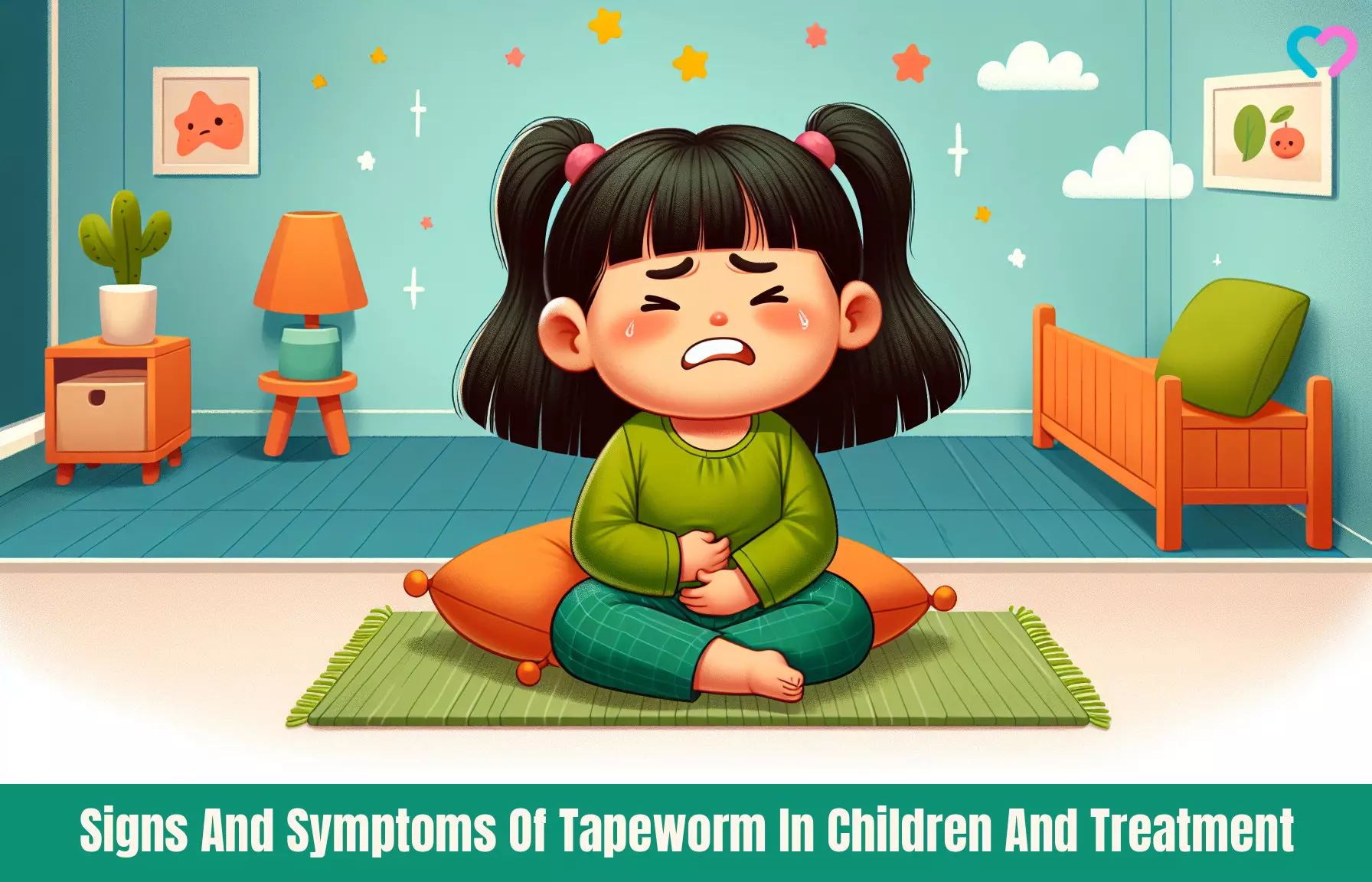
Image: Dall·E/MomJunction Design Team
References
1. About Human Tapeworm; Centers for Disease Control and Prevention
2. Awa Ba-Diop, et al.;Epidemiology, causes, and treatment of epilepsy in sub-Saharan Africa; The Lancet Neurology (2017).
3. Digestive System – Tapeworm; Rady Childrens Hospital San Diego
4. Taeniasis/cysticercosis; transmission and burden; The World Health Organization
5. Fish tapeworm infection; United States National Library of Medicine
6. Symptoms of Human Tapeworm; Centers for Disease Control and Prevention
7. About Cysticercosis; Centers for Disease Control and Prevention
8. Ellen J. Lesh and Mark F. Brady; Tapeworm (Taenia Solium, Taenia Saginata, Diphyllobothrium, Cysticercosis, Neurocysticercosis); StatPearls Publishing (2020).
9. Taeniasis and Cysticercosis; Investigative Guidelines; PUBLIC HEALTH DIVISION; Acute and Communicable Disease Prevention
10. Ann E. Lloyd, et al.; Treatment Options and Considerations for Intestinal Helminthic Infections; Journal of Pharmacy Technology (2014).
11. Hector H. García, et al.; Current Consensus Guidelines for Treatment of Neurocysticercosis; Clinical Microbiology Reviews (2002).
12. Clinical Care of Cysticercosis; Centers for Disease Control and Prevention
13. Yi-Hsuan Ma, et al.; Cestocidal activities of bioactive garlic compounds against Hymenolepis nana; (2022)
14. John A.O. Okeniyi, et al.;Effectiveness of Dried Carica papaya Seeds Against Human Intestinal Parasitosis: A Pilot Study; (2007)
15. Tapeworm; healthdirect; Australian Government Department of Health
16. Anisha Jasti, et al.; Mental and behavioral effects of parasitic infections: a review; National Library of Medicine (2007)
17. Threadworms; NHS
18. School Deworming; WHO
19. Tapeworms; HealthyChildren.org
20. Tapeworm infection; Mayo Clinic
21. Worms in humans; NHS UK
22. Tapeworms; Rady Childrens Hospital San Diego
23. Tapeworms; American Academy of Pediatrics 24. Tapeworm Infection; Cleveland Clinic
25. Soil-transmitted helminth infections; World Health Organization
Community Experiences
Join the conversation and become a part of our nurturing community! Share your stories, experiences, and insights to connect with fellow parents.
Read full bio of Dr Sarah Jane Karabus
Read full bio of Dr Bisny T. Joseph
Read full bio of Swati Patwal
Read full bio of Anindita Ghatak





